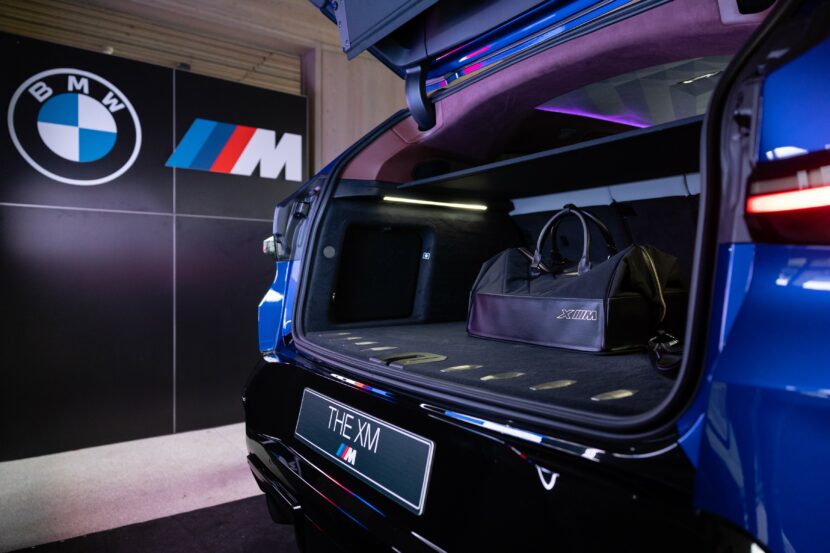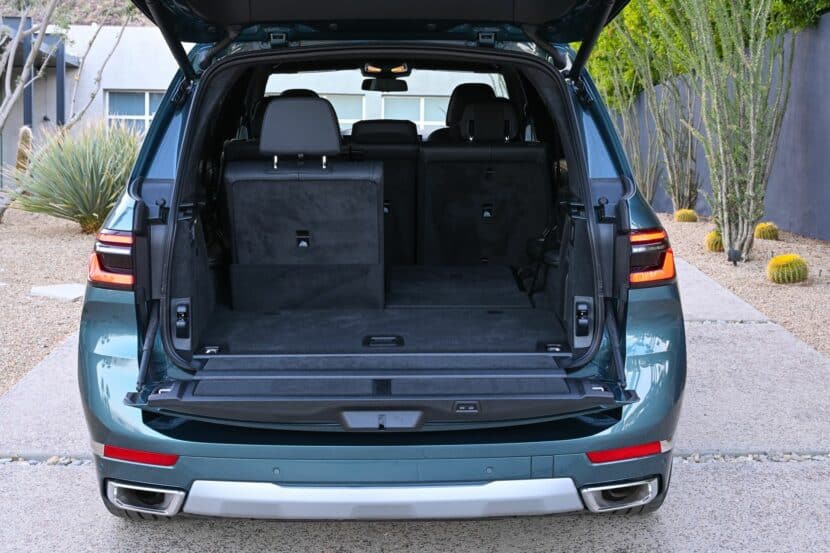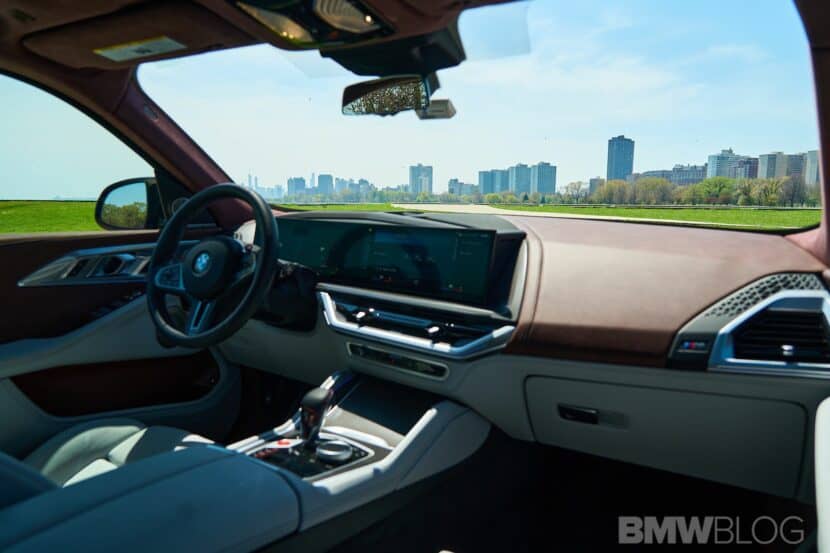While it’s a distant possibility, some out there might be cross-shopping the three-row BMW X7 with the radical and performance-focused BMW XM. There are some surprising similarities. Both boast a face that only a mother could love, offer similar interior amenities, and can be had with a potent V8 engine. Only the XM offers a hybrid variant (the only version), but the X7 costs significantly less.
Of course, you’ve likely already considered those figures. You might not have looked into the stats on each when it comes to size. Dimensions are important – parking, garage fitment, and overall driver comfort depend largely on how big a vehicle is. So, we take an in-depth look at the overall proportions of the two heaviest hitters in the BMW lineup.
| Dimension | BMW X7 | BMW XM |
|---|---|---|
| Length | 203.6 inches | 201.2 inches |
| Width | 78.7 inches | 78.9 inches |
| Height | 72.2 inches | 69.1 inches |
| Headroom (front) | 41.9 inches | 40.4 inches |
| Headroom (second row) | 39.9 inches | 38.8 inches |
| Legroom (second row) | 37.6 inches | 40.3 inches |
| Cargo space (behind second row) | 48.6 cubic feet | 18.6 cubic feet |
| Cargo space (with all seats folder) | 90.4 cubic feet | 64.3 cubic feet |
BMW XM vs. BMW X7 Exterior Dimensions
The BMW X7 measures 203.6 inches long, stands 72.2 inches high, and is 78.7 inches wide without the mirrors. The XM boasts slightly more motorsport-friendly dimensions – appropriate given its name. So, it measures 201.2 inches long, boasts 69.1 inches of height, and is (almost identical) 78.9 inches wide without the mirrors. While these are mostly very similar stats, height is an important difference between the two. You’re marginally less visible to other drivers, but it’s a small price to pay for the XM’s more aggressive, low-slung suspension.
BMW XM vs. BMW X7 Interior Dimensions
Inside, it’s surprisingly close between the two. 38.8 inches of second-row headroom and 40.3 inches of second-row legroom in the XM are only marginally different from the second row of the BMW X7. It offers 39.9 inches of headroom and 37.6 inches of legroom. Up in the driver and passenger area, the results are flipped. The XM has more headroom and less legroom than the X7. 40.4 inches of headroom and legroom make the XM spacious and comfortable up front. But the same could be said for the X7, with 41.9 inches of headroom and 39.8 inches of legroom.
Only the BMW X7 boasts a third row of seats; the comparison falls flat if you need room for seven. What’s somewhat shocking here is that the sloping fastback roof of the XM doesn’t really impact passenger space. Aside from carrying two less – or one less with captain’s chairs in the X7 – the XM isn’t much of a compromise from the inside.
BMW XM vs. BMW X7 Cargo Area Dimensions

With both vehicles in their storage-optimized configuration – all the seats folded down – the BMW XM doesn’t stand a chance. The BMW X7 provides a maximum of 90.4 cubic feet of storage space, while the BMW XM only offers 64.3 cubic feet. Remember that sloping roof I was talking about? Turns out the most-impacted area is the trunk. I guess you’ll still have the XM-branded bag to haul a small dog in or something.

Of course, it’s not all the time you’ll need to haul <only things. The XM’s trunk is a measly 18.6 cubic feet of capacity, but it actually bests the BMW X7 if the third row is up. You’ve only got 12.8 cubic feet behind the third row, roughly the volume of a 4 Series’ trunk. Not a lot. I suspect most customers will fold down the third row to haul occasionally, granting 48.6 cubic feet of stuff-stowage.
So, Which is Bigger? The BMW XM vs. BMW X7?
As you can see, the BMW X7 is overall larger. That makes it more adept at hauling both people and stuff. Don’t forget – the X7 can also tow up to 7,500 pounds, while the XM isn’t even given a tow rating. Overall, the BMW X7 is the more practical vehicle, with few real drawbacks regarding exterior dimensions. Plus, it’s marginally easier on the eyes, I guess.









































































